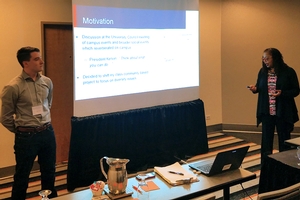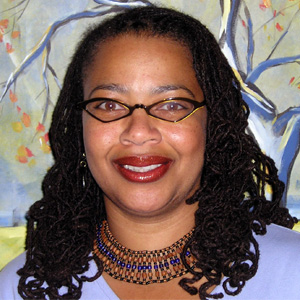Business
Interdisciplinary Impact Kogod Marketing Professor Sonya Grier’s interdisciplinary approach leads to powerful solutions

For AU Marketing Professor Sonya Grier, the only way to understand a problem is to examine multiple perspectives. "An interdisciplinary approach is essential," Grier says. "To truly understand an issue, you must consider how different people see it.”
Grier, a proponent of marketing for social good, believes that by integrating different viewpoints, people better understand the factors contributing to a problem. Through this holistic approach, better solutions are reached and more impactful change in society is made. An avid food and health market researcher, Grier explains that when researching issues such as obesity, she must consider many questions. Why does a store sell specific products in a neighborhood? Why is a company targeting a particular demographic group?
“It’s too simple to assume there’s an obesity problem in the US because people eat too much, or don’t exercise enough,” Grier says. “There is never just one factor.”
Focusing on consumer health research also provides an outlet to investigate another area of interest for Grier: race. While she has long been fascinated with the intersection of race and marketing, it was not always a research priority in the field. Looking at health issues through a racial lens allowed Grier to investigate this interest area, and improve its validity as a research topic.
 For a long time, race was not emphasized in marketing,” Grier says. “With issues like immigration and shifting demographics becoming more and more important, people see the need to focus on race in the health field. Health gave me the opportunity to focus on race within marketing.”
For a long time, race was not emphasized in marketing,” Grier says. “With issues like immigration and shifting demographics becoming more and more important, people see the need to focus on race in the health field. Health gave me the opportunity to focus on race within marketing.”
The recent Flint, Michigan, water crises is a prime example of why factoring race into health marketing is so crucial. When Flint residents, who are primarily African-American and low-income, learned their drinking water was contaminated with lead, it was clear that where they lived impacted their health. A less obvious —but just as important—factor was their race. Because a person’s race influenced where they lived in the city, it also determined if they drank the contaminated water.
Grier hopes that by fostering an understanding of race in marketing, she can help avoid such future crises. “I want to influence peoples’ perceptions and behaviors for the betterment of society,” she says. “What messages can we send to encourage harmonious racial relationships? How can we connect this to people’s overall health? These are the types of things I study.”
Grier’s interdisciplinary health research is not enough for her, though. She believes to truly affect change, she must integrate it into her teaching as well.
“Approaching issues from different disciplines is something we don’t always do with our students, especially in the business school,” Grier explains. “I want to bring students different, important perspectives that they’ll encounter out in the real world.
One way she integrates different viewpoints in the classroom is by assigning students interdisciplinary projects. In one of her recent social marketing classes, Grier asked students to develop marketing plans that facilitated inclusion on campus. Staff members from the admissions and financial aid offices, center for diversity and inclusion, and office of the provost presented to the class, helping students consider inclusion from different angles.
Groups then selected a different on-campus problem, such as gender issues or racial segregation in clubs, and strategized how to best address it. “These projects affected students so personally because they were connected to the campus community. To take what they learned in class and apply it directly to their daily lives—that’s impact,” Grier enthuses.
Despite its rewards, Grier admits interdisciplinary research and teaching presents its challenges. A major barrier is the additional time and effort this approach requires. In order to understand different fields, Grier must attend multiple conferences and read across disciplines—each with its own language and jargon.
“Oftentimes you move faster if you’re just focused on one field, because everyone’s thinking the same,” Grier says. “When you’re trying to create something new that melds different views—that’s a whole other thing. There’s learning and integration that happens, and issues you have to work through.”
The extra work is worth every ounce of effort, though. Grier is not only helping develop better solutions to problems, but advancing the field as a whole. “I don’t just do this work for myself—I do it for everyone conducting interdisciplinary research,” she says. “In this way, I hope to encourage the interdisciplinary approach in the marketing field.”
Most of all, Grier hopes that by continuing to integrate different perspectives into her research and teaching, she will help discover powerful solutions to society’s problems. “It’s really an issue of opening people’s minds to different viewpoints,” she says. “It’s this interdisciplinary perspective that allows you to develop solutions that will make society a better place.”
